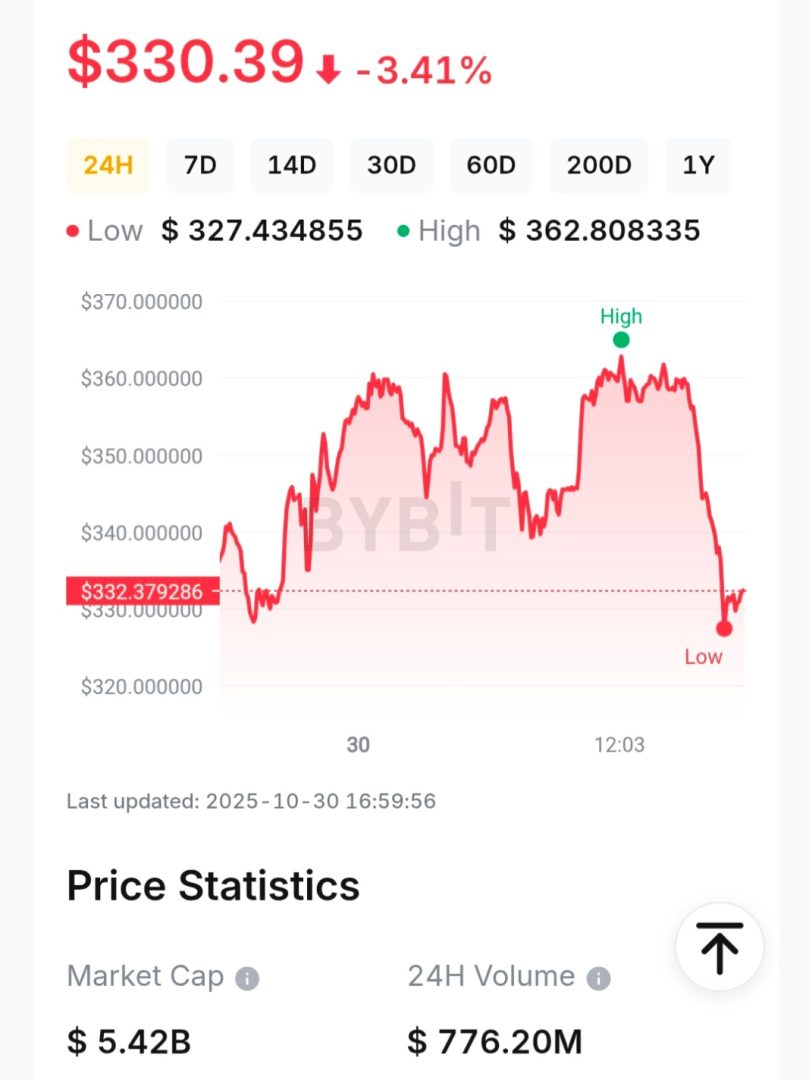Introduction
Trading close to $3,836 in late October 2025, the Ethereum price broke a long-term descending trend. In community sentiment polls, 82% of traders were bullish, expecting continued upward movement.
Building on this, analysts note that the October 2025 price reflected a mix of macroeconomic realities. Tightening on-chain supply and more disciplined investor behaviour contributed to boosted risk appetite and institutional flows, says CoinCentral.
Given these factors, a deeper understanding of Ethereum’s price dynamics is crucial for anyone watching cryptocurrency markets or the place of blockchain in modern finance.
Marco matters, the tailwinds for ETH’s price
The Ethereum price is linked to macroeconomic factors. Rising US Treasury yields and a strong dollar have capped cryptocurrency rallies. However, when inflation expectations rise, investors willing to take on more risk for higher returns re-enter cryptocurrency markets while signs of looser monetary policy spark renewed momentum.
Building on this, liquidity, inflation, and interest-rate expectations define whether money flows into or away from digital assets. Acting as tailwinds, geopolitical events can quickly alter sentiment and affect the price.
Institutional flows: The new price anchors
A rise in Ethereum-linked exchange-traded funds (ETFs) and record derivatives activity signalled increased institutional participation. According to Coin Central, the sharp increase in derivatives trading helped the Ethereum price stabilise near $4,000 despite volatility in the broader market, says CoinCentral.
Dogeverse Announces The Last Call To Investors: The Presale Is Ending; It’s Now or Never!
Institutional investors are acquiring Ethereum directly, says Coin Edition. When large holders increase their positions, it signals long-term confidence, and institutional flows become the new price anchors.
On-chain fundamentals and technical setups
A surge in DeFi activity and tokenised real-world assets (RWAs) is shaping the Ethereum price outlook. Ethereum’s infrastructure has become the backbone for tokenising traditional assets. Over 316 RWA projects currently operate on Ethereum, which dominates the RWA market with around $7.5 billion in tokenised value, 59% of the total market hosted on its platform in mid-2025.
As a framework for analysing market cycles, the Wyckoff theory describes how large investors accumulate positions during low-volatility phases before driving prices higher. Ethereum entered its Wyckoff re-accumulation phase during late October and could be poised for a strong markup phase, according to Brave New Coin.
In addition to macro tailwinds, this technical setup tightened supply and reinforced bullish sentiment.
Young Kenyans turning to mobile devices to grow wealth
Between fear and FOMO, ETH maintains its footing
Fluctuating between fear and the fear of missing out (FOMO), Ethereum’s performance in October 2025 reflected the uneasy temperament prevalent in the broader market. Rather than structural strength, matters of substance moved the Ethereum price.
Bitget writes: “Though shaken, Ethereum’s investor base remains attentive rather than defeated. Sentiment is fragile, yet far from collapsed … neither frozen by fear, nor swept away by euphoria, Ethereum remains in motion”.
Conclusion
Fluctuating between fear and the fear of missing out (FOMO), Ethereum’s performance in October 2025 reflected the uneasy temperament prevalent in the broader market. Rather than structural strength, matters of substance (network developments, monetary policy, regulation, and the question of cryptocurrency’s evolving role in global finance) moved the Ethereum price.
Bitget writes: “Though shaken, Ethereum’s investor base remains attentive rather than defeated. Sentiment is fragile, yet far from collapsed … neither frozen by fear, nor swept away by euphoria, Ethereum remains in motion”.
Did you love the story? You can also share YOUR story and get it published on Bizna Click here to get started.




